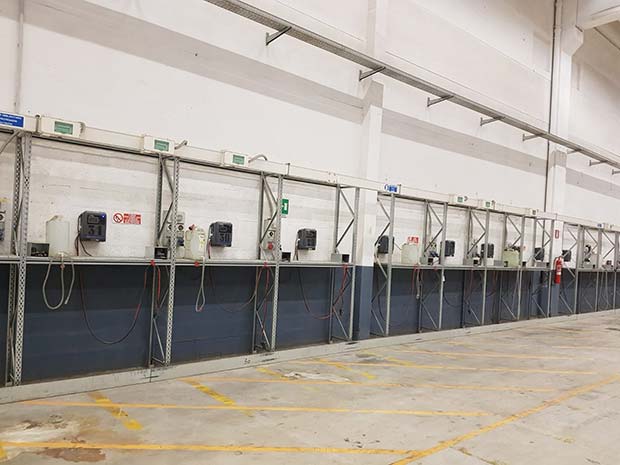Following on from the first part in our June 1st issue, Martin Walsh, Senior Product Manager Motive and Reserve Power at EnerSys EMEA, discusses 12 tips to help you efficiently charge even the largest of motive power batteries.

7: Reducing the charging time
Challenge: Chargers can adversely affect warehouse productivity through excessive charging periods as well as by failing.
Solution: Using optimised charging profiles reduces charging times by one or even two hours, depending on battery type.
8: Increasing maintenance intervals
Challenge: Further loss of productivity arises if maintenance interval periods must be shortened. As each 60 litre water top-up can take 20 to 30 minutes, with the battery being unavailable for use, this is another strong consideration.
Solution: Intelligent charging can extend the maintenance intervals for some batteries to up to eight weeks, compared with just one week to 10 days for conventional chargers.
9: Mitigating the effects of poor power factor
Challenge: Conventional chargers with a poor input power factor mean that supply cabling and switchgear must be upsized, while the mains supply is overloaded with reactive power and subjected to AC distortion.
Solution: These problems can be nearly, if not entirely eliminated, by using modern modular chargers that have a power factor close to one.
10: Maintaining visibility of charger status
Challenge: Maintaining chargers can be time-consuming and labour intensive if each unit has to be inspected on the warehouse floor. Solution: With the right infrastructure, battery chargers can have wireless devices installed to allow communication and easy visibility of charger status from a central location.
11: Minimising the impact of a module failure
Challenge: While we have already seen how a modular design keeps the charger operational even if a module fails, it is still important to minimise the impact of a module failure if it does occur.
Solution: Self-diagnostic functions on modular chargers flag any failure, and fitting a new module is a simple plug-and-play operation. Standard modules are always available for rapid delivery and replacement.
12: Ensuring the charger is set up correctly for the battery it’s charging
Challenge: Batteries cannot be optimally charged if the charger is not set up correctly for them.
Solution: Today’s modular chargers can offer automatic identification of their connected batteries, together with automatic switching of the output voltage (within the charger’s specification). The control algorithm also enables increased efficiency and power factor control.
ENERSYS




Comments are closed.